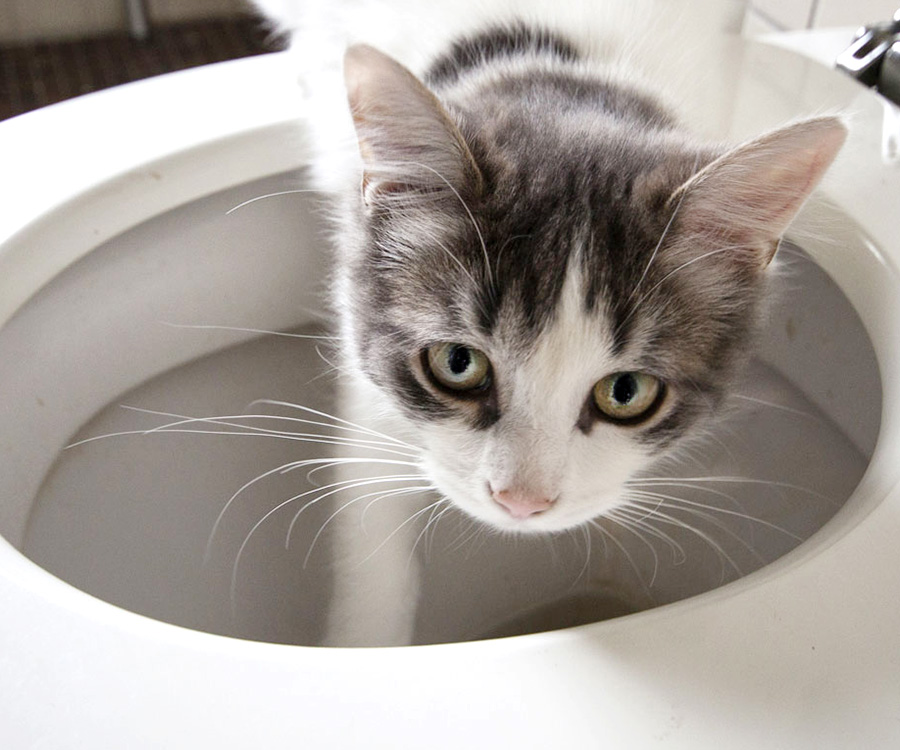We've found this post involving How to Dispose of Cat Poop and Litter Without Plastic Bags directly below on the web and concluded it made perfect sense to discuss it with you here.

Introduction
As pet cat owners, it's important to bear in mind exactly how we dispose of our feline friends' waste. While it may seem convenient to flush cat poop down the commode, this technique can have damaging effects for both the environment and human health and wellness.
Environmental Impact
Flushing feline poop presents dangerous virus and bloodsuckers right into the supply of water, posturing a considerable danger to aquatic environments. These contaminants can adversely affect aquatic life and concession water top quality.
Health Risks
In addition to environmental issues, flushing pet cat waste can likewise position wellness risks to people. Feline feces may consist of Toxoplasma gondii, a parasite that can trigger toxoplasmosis-- a possibly extreme illness, particularly for expecting women and people with weakened body immune systems.
Alternatives to Flushing
The good news is, there are more secure and much more responsible means to take care of feline poop. Consider the adhering to alternatives:
1. Scoop and Dispose in Trash
One of the most common technique of disposing of pet cat poop is to scoop it into an eco-friendly bag and throw it in the garbage. Make sure to utilize a specialized clutter inside story and throw away the waste quickly.
2. Use Biodegradable Litter
Go with biodegradable feline clutter made from materials such as corn or wheat. These litters are environmentally friendly and can be safely thrown away in the garbage.
3. Bury in the Yard
If you have a lawn, think about burying cat waste in a designated location far from veggie gardens and water sources. Make certain to dig deep sufficient to prevent contamination of groundwater.
4. Install a Pet Waste Disposal System
Buy a family pet waste disposal system particularly developed for cat waste. These systems utilize enzymes to break down the waste, lowering smell and environmental influence.
Final thought
Responsible pet dog ownership expands past offering food and shelter-- it likewise involves proper waste administration. By avoiding purging feline poop down the bathroom and opting for different disposal approaches, we can decrease our ecological impact and protect human health.
Why Can’t I Flush Cat Poop?
It Spreads a Parasite
Cats are frequently infected with a parasite called toxoplasma gondii. The parasite causes an infection called toxoplasmosis. It is usually harmless to cats. The parasite only uses cat poop as a host for its eggs. Otherwise, the cat’s immune system usually keeps the infection at low enough levels to maintain its own health. But it does not stop the develop of eggs. These eggs are tiny and surprisingly tough. They may survive for a year before they begin to grow. But that’s the problem.
Our wastewater system is not designed to deal with toxoplasmosis eggs. Instead, most eggs will flush from your toilet into sewers and wastewater management plants. After the sewage is treated for many other harmful things in it, it is typically released into local rivers, lakes, or oceans. Here, the toxoplasmosis eggs can find new hosts, including starfish, crabs, otters, and many other wildlife. For many, this is a significant risk to their health. Toxoplasmosis can also end up infecting water sources that are important for agriculture, which means our deer, pigs, and sheep can get infected too.
Is There Risk to Humans?
There can be a risk to human life from flushing cat poop down the toilet. If you do so, the parasites from your cat’s poop can end up in shellfish, game animals, or livestock. If this meat is then served raw or undercooked, the people who eat it can get sick.
In fact, according to the CDC, 40 million people in the United States are infected with toxoplasma gondii. They get it from exposure to infected seafood, or from some kind of cat poop contamination, like drinking from a stream that is contaminated or touching anything that has come into contact with cat poop. That includes just cleaning a cat litter box.
Most people who get infected with these parasites will not develop any symptoms. However, for pregnant women or for those with compromised immune systems, the parasite can cause severe health problems.
How to Handle Cat Poop
The best way to handle cat poop is actually to clean the box more often. The eggs that the parasite sheds will not become active until one to five days after the cat poops. That means that if you clean daily, you’re much less likely to come into direct contact with infectious eggs.
That said, always dispose of cat poop in the garbage and not down the toilet. Wash your hands before and after you clean the litter box, and bring the bag of poop right outside to your garbage bins.
https://trenchlesssolutionsusa.com/why-cant-i-flush-cat-poop/

I came across that article about Don’t flush cat feces down the toilet when doing a search on the internet. Sharing is nice. Helping others is fun. Thank-you for taking the time to read it.
Check It Out